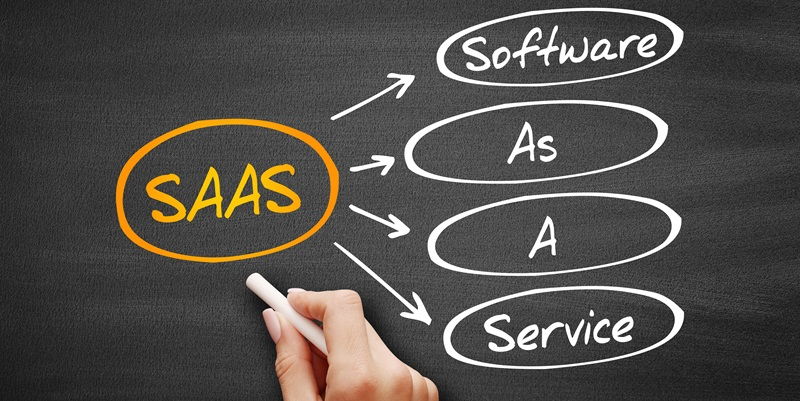In today’s digital landscape, third-party software-as-a-service (SaaS) solutions have become an integral part of organizations, offering convenience, scalability, and cost-effectiveness. However, this dependence on third-party vendors introduces new risks and vulnerabilities that can have detrimental consequences if not effectively managed. In this article, we will explore the pivotal role of third-party SaaS security solutions in safeguarding an organization’s SaaS supply chain. We will delve into the importance of evaluating SaaS vendors as a critical element of comprehensive vendor risk management.
Five Tips for SaaS Security in Third-Party Risk Management
Traditional approaches to risk management are no longer sufficient in the rapidly evolving cybersecurity landscape. Continuous monitoring is essential to maintain an up-to-date understanding of the risks associated with third-party SaaS solutions. By continuously assessing and monitoring vendors, organizations can proactively identify vulnerabilities, remediate them promptly, and minimize the risk of a potential breach.
Failing to implement robust third-party risk management (TPRM) practices can have severe consequences for organizations. Cybersecurity breaches resulting from vulnerabilities introduced by third-party vendors can lead to the exposure of sensitive data, financial theft, and reputational damage. The fallout from such incidents can be both financially and operationally devastating for organizations of all sizes.
In recent years, several high-profile data breaches have occurred due to vulnerabilities introduced by third-party vendors. These breaches have demonstrated how intricately connected an organization’s security is to the security practices of their vendors. Cybercriminals often target weak links in the supply chain to gain unauthorized access to sensitive information. By properly assessing and managing third-party risks, organizations can minimize the likelihood and impact of such breaches and protect their valuable data assets.
Data privacy regulations, such as the General Data Protection Regulation (GDPR) and the California Consumer Privacy Act (CCPA), impose significant responsibilities on organizations to ensure the security and privacy of personal data. Non-compliance with these regulations can result in substantial fines and legal liabilities. As third-party vendors often handle sensitive data, organizations must thoroughly evaluate their security measures and their compliance with applicable regulations.
While the risks associated with third-party vendors are significant, effective TPRM practices offer numerous benefits. By implementing a robust TPRM framework, organizations can gain greater visibility and control over their supply chain, ensuring that their vendors adhere to regulatory compliance and best security practices. This, in turn, helps build customer trust, enhances the organization’s reputation, and mitigates the potential financial and operational risks associated with third-party dependencies.
Strengthening Security Posture with TPRM in the SaaS Supply Chain
TPRM plays a vital role in strengthening an organization’s overall security posture by ensuring adherence to regulatory compliance and best security practices throughout the entire SaaS supply chain. It enables organizations to assess the security capabilities of potential vendors, vetting their ability to meet industry standards and protect sensitive data.
By integrating TPRM into their vendor management processes, organizations can identify potential risks and vulnerabilities proactively. This approach allows them to implement appropriate controls, request necessary security enhancements from vendors, and ensure continuous compliance. Through regular audits and assessments, organizations can effectively manage and respond to emerging security threats, thus fortifying their overall security defenses.
Thorough third-party risk assessments are a critical component of effective TPRM. These assessments involve evaluating potential vendors’ security protocols, internal controls, incident response capabilities, and adherence to data privacy regulations. They facilitate informed decision-making and risk mitigation, ensuring alignment with the organization’s security standards, and ultimately fortifying the overall security defenses.
By starting with thorough third-party risk assessments, companies can gain the necessary insights to take the next steps in proactively addressing risks and ensuring a secure and well-protected SaaS supply chain. These assessments provide organizations with a comprehensive understanding of potential vulnerabilities, enabling them to define adequate control measures, establish monitoring mechanisms, and strengthen their risk mitigation strategies.
Third-party SaaS solutions offer significant benefits to organizations, but they also bring along potential risks and vulnerabilities. Implementing robust third-party risk management practices is crucial to safeguard the SaaS supply chain, protect sensitive data, and mitigate financial and reputational risks. By evaluating SaaS vendors, continuously monitoring their security posture, and ensuring compliance with data privacy regulations, organizations can fortify their security defenses and maintain customer trust.
Effectively managing third-party risks through comprehensive assessments enables organizations to make informed decisions, proactively address vulnerabilities, and ensure a well-protected SaaS supply chain. Ultimately, by prioritizing TPRM and investing in robust security solutions, organizations can navigate the complexities of the digital landscape with confidence and peace of mind.

